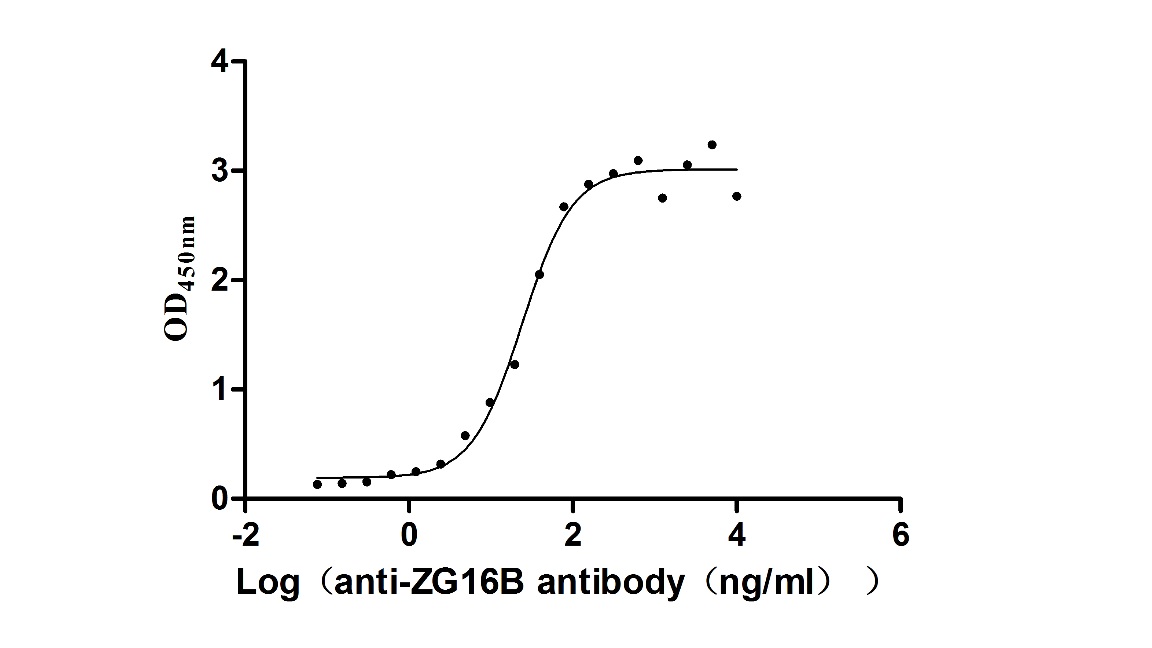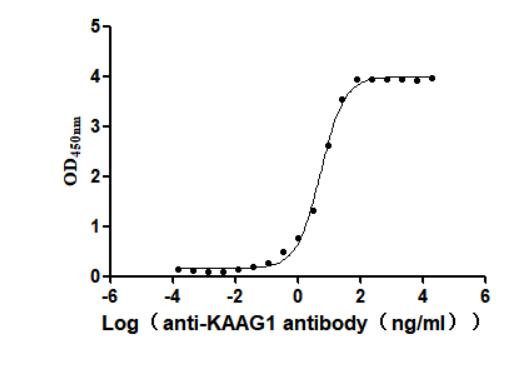Recombinant Mouse SRSF protein kinase 2 (Srpk2)
-
中文名称:小鼠Srpk2重组蛋白
-
货号:CSB-YP022683MO
-
规格:
-
来源:Yeast
-
其他:
-
中文名称:小鼠Srpk2重组蛋白
-
货号:CSB-EP022683MO
-
规格:
-
来源:E.coli
-
其他:
-
中文名称:小鼠Srpk2重组蛋白
-
货号:CSB-EP022683MO-B
-
规格:
-
来源:E.coli
-
共轭:Avi-tag Biotinylated
E. coli biotin ligase (BirA) is highly specific in covalently attaching biotin to the 15 amino acid AviTag peptide. This recombinant protein was biotinylated in vivo by AviTag-BirA technology, which method is BriA catalyzes amide linkage between the biotin and the specific lysine of the AviTag.
-
其他:
-
中文名称:小鼠Srpk2重组蛋白
-
货号:CSB-BP022683MO
-
规格:
-
来源:Baculovirus
-
其他:
-
中文名称:小鼠Srpk2重组蛋白
-
货号:CSB-MP022683MO
-
规格:
-
来源:Mammalian cell
-
其他:
产品详情
-
纯度:>85% (SDS-PAGE)
-
基因名:Srpk2
-
Uniprot No.:
-
别名:Srpk2SRSF protein kinase 2; EC 2.7.11.1; SFRS protein kinase 2; Serine/arginine-rich protein-specific kinase 2; SR-protein-specific kinase 2) [Cleaved into: SRSF protein kinase 2 N-terminal; SRSF protein kinase 2 C-terminal]
-
种属:Mus musculus (Mouse)
-
蛋白长度:Full length protein
-
表达区域:1-681
-
氨基酸序列MSVNSEKSSS SERPEPQQKA PLVPPPPPPP PPPPLPDPAP PEPEEEILGS DDEEQEDPAD YCKGGYHPVK IGDLFNGRYH VIRKLGWGHF STVWLCWDMQ GKRFVAMKVV KSAQHYTETA LDEIKLLKCV RESDPSDPNK DMVVQLIDDF KISGMNGIHV CMVFEVLGHH LLKWIIKSNY QGLPVRCVKS IIRQVLQGLD YLHSKCKIIH TDIKPENILM CVDDAYVRRM AAEATEWQKA GAPPPSGSAV STAPQQKPIG KISKNKKKKL KKKQKRQAEL LEKRLQEIEE LEREAERKIL EENITSAEAS GEQDGEYQPE VTLKAADLED TTEEETAKDN GEVEDQEEKE DAEKENAEKD EDDVEQELAN LDPTWVESPK ANGHIENGPF SLEQQLEDEE DDEDDCANPE EYNLDEPNAE SDYTYSSSYE QFNGELPNGQ HKTSEFPTPL FSGPLEPVAC GSVISEGSPL TEQEESSPSH DRSRTVSASS TGDLPKTKTR AADLLVNPLD PRNADKIRVK IADLGNACWV HKHFTEDIQT RQYRSIEVLI GAGYSTPADI WSTACMAFEL ATGDYLFEPH SGEDYSRDED HIAHIIELLG SIPRHFALSG KYSREFFNRR GELRHITKLK PWSLFDVLVE KYGWPHEDAA QFTDFLIPML EMVPEKRASA GECLRHPWLN S
-
蛋白标签:Tag type will be determined during the manufacturing process.
The tag type will be determined during production process. If you have specified tag type, please tell us and we will develop the specified tag preferentially. -
产品提供形式:Lyophilized powder
Note: We will preferentially ship the format that we have in stock, however, if you have any special requirement for the format, please remark your requirement when placing the order, we will prepare according to your demand. -
复溶:We recommend that this vial be briefly centrifuged prior to opening to bring the contents to the bottom. Please reconstitute protein in deionized sterile water to a concentration of 0.1-1.0 mg/mL.We recommend to add 5-50% of glycerol (final concentration) and aliquot for long-term storage at -20℃/-80℃. Our default final concentration of glycerol is 50%. Customers could use it as reference.
-
储存条件:Store at -20°C/-80°C upon receipt, aliquoting is necessary for mutiple use. Avoid repeated freeze-thaw cycles.
-
保质期:The shelf life is related to many factors, storage state, buffer ingredients, storage temperature and the stability of the protein itself.
Generally, the shelf life of liquid form is 6 months at -20°C/-80°C. The shelf life of lyophilized form is 12 months at -20°C/-80°C. -
货期:Delivery time may differ from different purchasing way or location, please kindly consult your local distributors for specific delivery time.Note: All of our proteins are default shipped with normal blue ice packs, if you request to ship with dry ice, please communicate with us in advance and extra fees will be charged.
-
注意事项:Repeated freezing and thawing is not recommended. Store working aliquots at 4°C for up to one week.
-
Datasheet :Please contact us to get it.
靶点详情
-
功能:Serine/arginine-rich protein-specific kinase which specifically phosphorylates its substrates at serine residues located in regions rich in arginine/serine dipeptides, known as RS domains and is involved in the phosphorylation of SR splicing factors and the regulation of splicing. Promotes neuronal apoptosis by up-regulating cyclin-D1 (CCND1) expression. This is done by the phosphorylation of SRSF2, leading to the suppression of p53/TP53 phosphorylation thereby relieving the repressive effect of p53/TP53 on cyclin-D1 (CCND1) expression. Phosphorylates ACIN1, and redistributes it from the nuclear speckles to the nucleoplasm, resulting in cyclin A1 but not cyclin A2 up-regulation. Plays an essential role in spliceosomal B complex formation via the phosphorylation of DDX23/PRP28. Probably by phosphorylating DDX23, leads to the suppression of incorrect R-loops formed during transcription; R-loops are composed of a DNA:RNA hybrid and the associated non-template single-stranded DNA.
-
基因功能参考文献:
- SRPK2 may contribute to the formation of hyperphosphorylated tau and the pathogenesis of Alzheimer disease. PMID: 23197718
- Interaction of Akt-phosphorylated SRPK2 with 14-3-3 mediates cell cycle and cell death in neurons. PMID: 19592491
-
亚细胞定位:Cytoplasm. Nucleus, nucleoplasm. Nucleus speckle. Chromosome.
-
蛋白家族:Protein kinase superfamily, CMGC Ser/Thr protein kinase family
-
组织特异性:Expressed in testes, lung and brain.
-
数据库链接:
KEGG: mmu:20817
STRING: 10090.ENSMUSP00000085734
UniGene: Mm.288728
Most popular with customers
-
Recombinant Rat Intestinal-type alkaline phosphatase 1 (Alpi) (Active)
Express system: Mammalian cell
Species: Rattus norvegicus (Rat)
-
Express system: Mammalian cell
Species: Macaca fascicularis (Crab-eating macaque) (Cynomolgus monkey)
-
Recombinant Macaca fascicularis Claudin (CLDN18)-VLPs (Active)
Express system: Mammalian cell
Species: Macaca fascicularis (Crab-eating macaque) (Cynomolgus monkey)
-
Recombinant Human Interleukin-17A (IL17A) (T26A) (Active)
Express system: Baculovirus
Species: Homo sapiens (Human)
-
Recombinant Human Carcinoembryonic antigen-related cell adhesion molecule 6 (CEACAM6) (Active)
Express system: Mammalian cell
Species: Homo sapiens (Human)
-
Recombinant Macaca fascicularis zymogen granule protein 16 homolog B (ZG16B) (Active)
Express system: Mammalian cell
Species: Macaca fascicularis (Crab-eating macaque) (Cynomolgus monkey)
-
Recombinant Human Kidney-associated antigen 1(KAAG1) (Active)
Express system: Baculovirus
Species: Homo sapiens (Human)
-
Recombinant Human Tumor necrosis factor ligand superfamily member 15(TNFSF15) (Active)
Express system: Mammalian cell
Species: Homo sapiens (Human)





-AC1.jpg)



-AC1.jpg)










